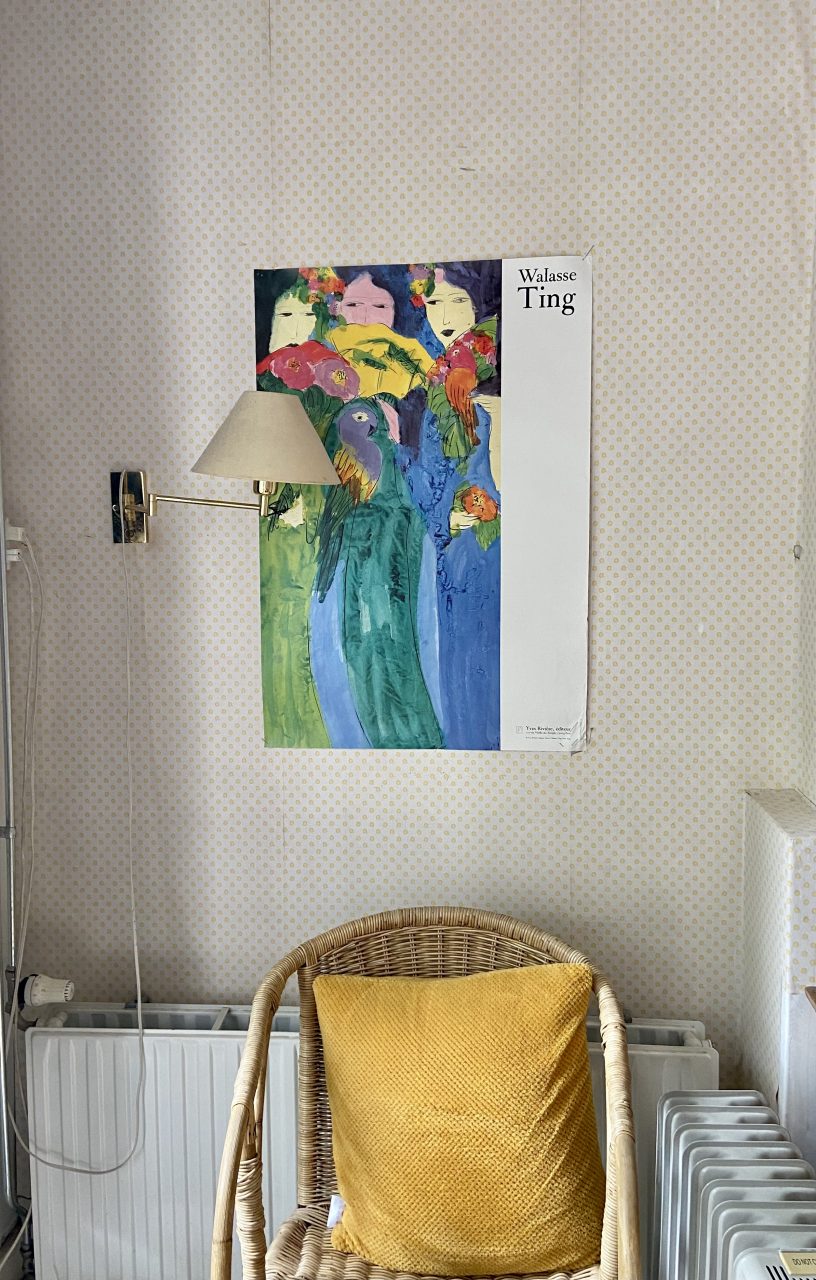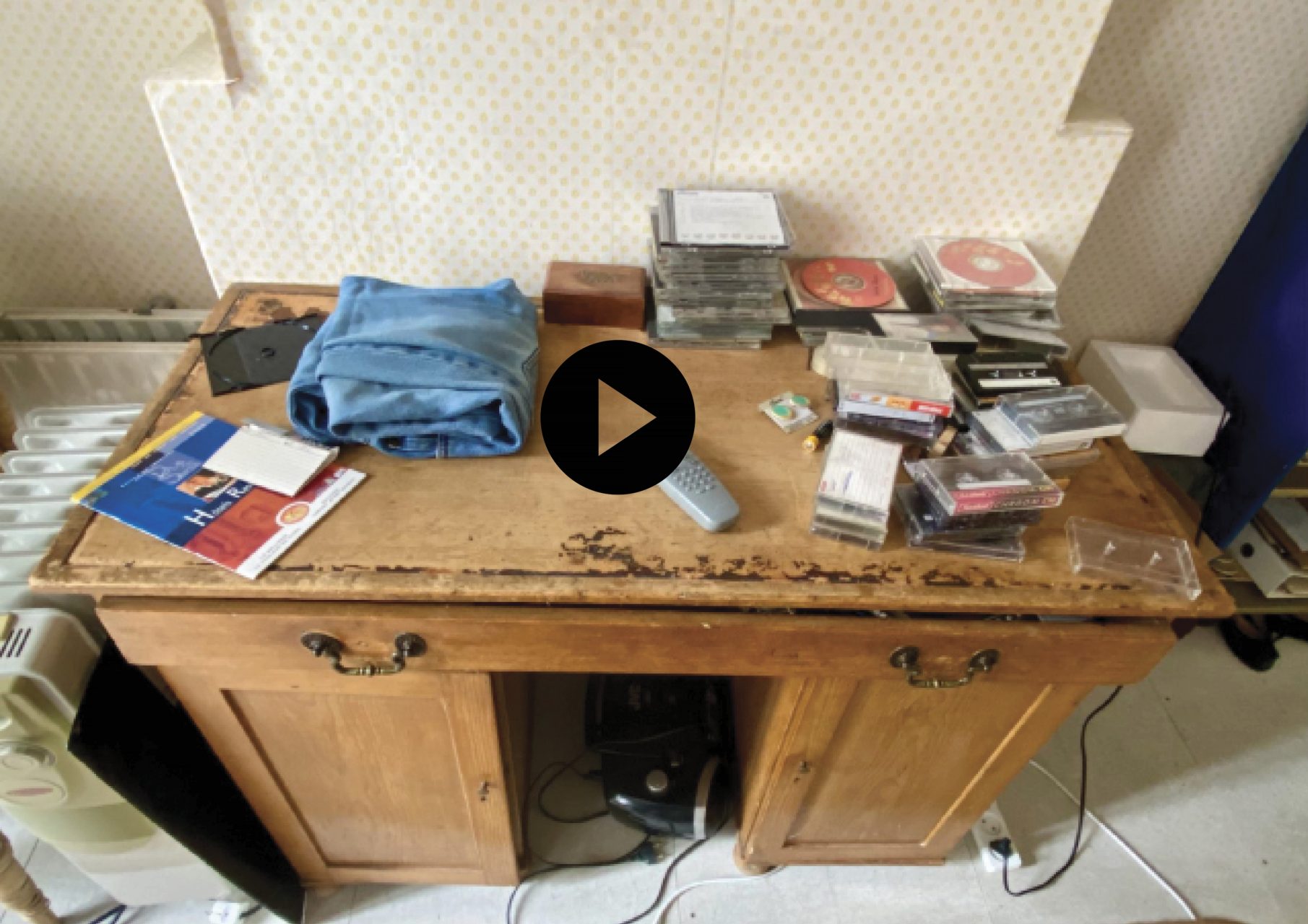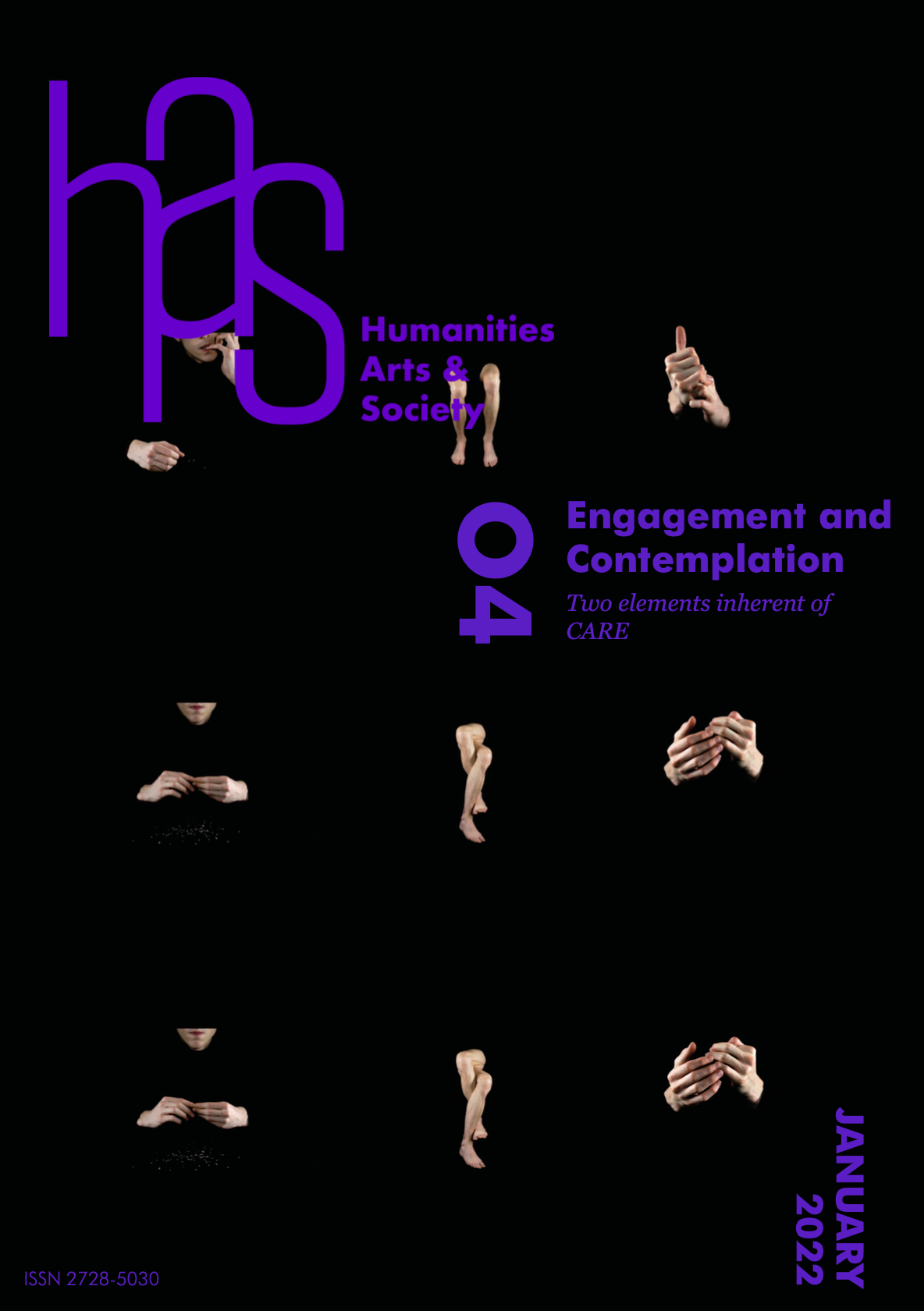
In line with the disengaged, millennial habit of scrolling through Facebook, I came across a job advertisement for a part-time caretaker on the student group of the University of Amsterdam Faculty of Humanities. It was Summer 2020, and I had just made it back to the Netherlands after a four-month lockdown in Colombia. The advertisement caught my attention: I was about to begin the second year of my Bachelor’s, and a part-time job assisting the elderly, something I had always enjoyed doing, seemed just right.
I first spoke with Mary, the woman I would eventually be caring for, over the phone. After a few weeks, she invited me to her home for no more than twenty minutes. Each conversation felt like a screening. I didn’t know if Mary was eager to identify my flaws, or if she genuinely wanted to hear how I spent my free time, or why I bothered to learn Dutch in a city where I could perfectly get by with English. Yet the diligence she manifested verbally was nowhere to be found in her home. A thick layer of dust hung on the air, such that the rare rays of light that entered the apartment were permanently stifling. Even so, Mary was ill, so whatever conditions I encountered were permeated by her illness. I reasoned this with my experience in caretaking, but my body had barely brushed against this atmosphere; to move with it, I was caught in a juncture of affects. Intriguing and perplexing, the incongruence between the stiff air and Mary’s enthusiasm to converse lured me into this juncture. The transmission of affect, as Teresa Brennan writes—a question that is social in origin, but biological and physical in effect.1
I situate my relationship with Mary in this paradigm precisely because it is an affective encounter; no one could better trace the affects at work in this relational space than the people in relation. After all, we are the ones who move with these affects, who are permeated by the atmosphere and each other. I am on the lookout for what this encounter is doing to me and what it does to Mary, a formulation Elspeth Probyn gives us in her work on affective habitus. Indeed, our habitus is a relational space that stays with affective moments of knowledge production. In attending to the senses that transmit information in our social field, new and imaginative forms of caring for another, and each other, emerged.
As such, this essay aims to continue the critical work on practices of caring in light of the challenges our societies face today. To be aware of a social field, of the relational spaces one shares, is to follow a network of affective encounters between those beings that compose the field. In a state of care, we must be aware of the feelings our relations enable and the ways in which these are transmitted. After all, to care is to feel—to take concern. To take care for something or someone is also to take thought for them (Oxford English Dictionary). How do feelings and thoughts move in an affective habitus? And why is it important to ask this question in a state of care?
First, the main character of traditional Western thought, the “emotionally contained subject,” is ruptured when we begin to consider the transmission of affect and its physiological impacts2. I linger in awe of the transformations my body has both enabled and been opened to as a consequence of curious and gentle attitudes toward the relational space Mary and I share. Second, and as the editors of this issue point out, the contradictions of human agency are prominent in tensions between engagement and contemplation. The focus on sensing and sensations—on touch, sight, and sound as modes of transmitting information affectively—not only sheds a sharper light on the ways in which we relate to each other, but actively alters these methods, such that in the physical act of being affected by another, our own forms for caring may also change.
Relations of touch
At times, Mary will ask me to walk with her inside the 50-square-meter apartment, with her walker, as she has done for the past few years. Helping her stand from a semi-horizontal position on a stretcher, I place my hands just above her elbows, feeling for a brief moment the thinness of her arms. Once her hands support her on the walker, I shift mine to her hips, supporting her from behind. We shuffle toward the window. She balances on one foot for a while, then the other, her right hip going slightly lower at the same time the left hip goes slightly higher. Sometimes I wonder if she’s dancing. On good days, Mary stretches her arms as long as her body allows her to and sighs, heavily, as if releasing a fraction of the hold illness has on her—a hold that moves to my hands, my body. Even as I exert soft pressure on Mary’s hips, I do not lose balance. I can keep her (Kun je me houden?, she asks), I can support her as the stress of her body breathes. The transmission of affect—pain, anxiety, fatigue—is, returning to Brennan, social in origin but also responsible for bodily changes. Our different physiologies, never mind an age gap of more than fifty years, respond differently to touch.
We shuffle back and forth the seven meters or so from the stretcher to the window and stop in front of the small balcony with hanging geraniums. Hues of bright red contrast the darkness inside the apartment. Mary’s eyes grow wide and active, soaking up light and colour—those details that have become seemingly out of reach to her. I return her to the stretcher, our shuffles echoing down the carpet. It is my impression that her body grows lighter—there is more room for fresh air in her lungs, and a smile even emerges. Paradoxically, my body does not grow heavier. Mary’s anxiety and fatigue have not simply been transferred over. They are released into the atmosphere, and become operative in the rest of my workday and every other workday. Affects, as Brennan reminds us, are not received or registered in a vacuum3. Mary feels the support of a seemingly distant body that can balance itself on two feet; she breaches a boundary that allows her to release those affects that had no place to go.

This intrusion affects me too. I do not turn away from the abject—in the thinness of her arms, the sharp edges of her ribcage, and the hollow of her stomach, I touch a reality that appears not to be my own.
An Ecological Habitus
There are other realities that would appear not to form a part of Mary’s life anymore. The geraniums hanging from the front balcony are but one of the flowers she looks after, and which look after her. In the back balcony, the balcony she views from her bed, hangs another arrangement of lilac geraniums surrounded by light-blue lobelia and golden rudbeckia awaiting the bees of each day. Every Spring, Mary thinks how she will assemble her garden, and indeed does assemble it, with the help of others. She cannot transplant the flowers, add soil, or even step out onto the balcony; she lives a different relation to her garden. Significantly, she lives in relation. Precisely because Mary cannot perform many of the actions required to keep a garden, she chooses flowers of the brightest colours that contrast each other in order to build an emotional atmosphere, certainly felt and in constant communication.


Thus, our social habitus also carries an ecological dimension. In caring for these flowers, Mary cares for herself. Not herself as an emotionally contained subject, but rather herself as one more character in a “more-than-human ecology,” another term I borrow from Probyn4. Our habitus is significantly material. We live with the elements that shape us and our environment. The bright colours and overflow of green alleviate Mary’s fatigue and encourage activity. She tells me how she picked out each flower (over the phone, listening to descriptions from the workers at the plant shop) and where she has chosen to place each pot—in places that won’t get too much dust from the neighbour’s renovation, so as to keep them vibrant as long as possible. The garden is Mary’s view of the world outside her apartment. It is where she sees reflections of light, wind, and colour, elements that transmit energy to her and our habitus.
Relations of Sound
One day, Mary asked me to plug a heater into a grey extension cord and move another heater from a white extension cord to an outlet on the wall. While this might seem trivial, anyone who has lived in old Amsterdam apartments understands why it would be important to plug things in correctly. The task was unclear, as Mary laid on her stretcher, her back to me, and could not visually indicate the objects I was to move. We danced around with the words for almost a half-hour, employing mimicry and even translations in multiple languages. The dilemma came down to one cord, which Mary could not see and I could not unplug, since it held half of the apartment’s light sources. I stood behind her, with the cord in my hand, fumbling for words. Suddenly, laughter erupted. Such ridiculousness! I dropped the cord and joined Mary. And as she managed to take a breath and start to say something, laughter erupted once more, contagiously.
Mary’s eyes gleamed with the enthusiasm of a child. Her body ached for cathartic laughter, for a space of recklessness and personality. Unprecedented, ridiculousness was joyously welcomed in an atmosphere of pain and exhaustion. Following Deborah Kapchan, the social field of listening, the habitus Mary and I occupied, was altered. If we take listening as “an active conduit for the social transmission and transformation of affect,” as Kapchan does4, we consider how modes of listening, material vibrations, affect and perhaps subvert the structures of a social field. Mary’s laughter was not an independent moment. It was already permeated by other listening acts that, following Kapchan, “do not lay claim to a space”6—listening acts that attune to materiality at the vibrational level.
I have witnessed Mary’s pain and anxiety for months. Listening to this pain, to the sublime, is uncomfortable, as it transgresses what is usually tacit and somatic, such as categories of “private” and “public”7. As her employee, I would not have imagined listening to stories of love, loss, or trauma. Yet it is precisely in bearing witness through sound—contracted chest sighs, crying, and of course, words—that these categories become malleable, and so do the boundaries that separate us. I am not indifferent to the affects of our habitus. Neither is Mary. Which is why a moment of cathartic laughter was able to linger in a space of instability, simultaneously open and capable of providing relief. Aware of an affective habitus, I listen, eager to be transformed and to transform. In the transmission of pain and anxiety, there is also joy and laughter—other modes of being in the world that are not bound by illness.
Teetering on the edge of inefficacy, my amateurism contributes to these modes of being. I am not a physician and Mary is not a patient; I am not English-speaking and she Dutch-speaking; I am not an employee and she an employer. We linger in a space of trial and error that allows for multidimensional relations, relations that aren’t merely transactional. The incident of the electrical plugs was but a trivial moment in any one day. But like that moment are many others, and it is their composite effect, their constant presence and activity in our habitus, that ultimately change the materiality of my body and of Mary’s body. Take my failure to organize her cassettes by musical genres, as I did not know genres at all. Not only did it prompt another moment in which ridiculousness was welcomed, it propelled other instances of attunement as I listened to the ways in which Mary resonates with her favourite melodies, how she transforms the sounds—often pieces with great room for improvisation—and shares them with me. Aware of the transmission of affects, I linger in a privileged position.

I often listened to her while working, hearing her sing in the background…
© Verónica Copello-Duque
Living in Relation
I stopped working for Mary in May of this year. I visited her before I went back to Colombia for the summer, and then again when I was back in Amsterdam in late August. I was happy to hear she had received the postcard I’d mailed her.
I continue to visit Mary even though I can no longer be her caretaker. She asks about my friends and family and loves seeing pictures of Colombia. Sometimes, she likes showing me a scene from a movie or wants to listen to a song with me. She shares the things that make her happy as much as those that cause her anxiety. As we talk, I once more linger in awe of the habitus we form part of. In touch, pain and fatigue become malleable. In sound, our habitus is charged with material vibrations that do not take ownership of the relational space. And in following a garden through the seasons, we have learned from other forms of being and their own communicative spaces.
It is precisely because affective methodologies haunt and intrude that they actively make up our habitus. To trace the ways in which information is transmitted in practices of caring is thus to open a space of possibilities for such actions to transform us. When we live in relation, we live aware of our surroundings, willing to let others affect us.
References
1Brennan, Teresa, The Transmission of Affect, Ithaca: Cornell University Press, 2004, p.3
2Ibid, p.2
3Ibid, p.6
4Probyn, Elspeth, “Following Oysters, Relating Taste,” in Eating the Ocean, Durham: Duke University Press, 2016, p.75.
5Kapchan, Deborah, Theorizing Sound Writing, Middletown, CT: Wesleyan University Press, 2017, p. 277.
6Ibid, p.285
7Ibid, p.288
Bibliography
Brennan, Teresa, The Transmission of Affect, Ithaca: Cornell University Press, 2004.
Kapchan, Deborah, Theorizing Sound Writing, Middletown, CT: Wesleyan University Press, 2017.
Probyn, Elspeth, “Following Oysters, Relating Taste,” in Eating the Ocean, Durham: Duke University Press, 2016, pp. 49-75.
Verónica Copello-Duque is a student of Literary and Cultural Analysis at the University of Amsterdam. Her work on human agency and practical ethics in literature has been featured in undergraduate journals, and she continues to pursue research in affect and globalization studies. Exploring combinations of theory and practice, she has taken leading roles in promoting and creating equal educational opportunities for youth in Colombia and other Latin American countries. During the past year, Verónica collaborated on a project with Dr. Esther Op de Beek (Leiden University), tracing practices of (in)visibility rendered by narratological conditions of space and time in modern literature.
Verónica Copello-Duque is a student of Literary and Cultural Analysis at the University of Amsterdam. Her work on human agency and practical ethics in literature has been featured in undergraduate journals, and she continues to pursue research in affect and globalization studies. Exploring combinations of theory and practice, she has taken leading roles in promoting and creating equal educational opportunities for youth in Colombia and other Latin American countries. During the past year, Verónica collaborated on a project with Dr. Esther Op de Beek (Leiden University), tracing practices of (in)visibility rendered by narratological conditions of space and time in modern literature.
